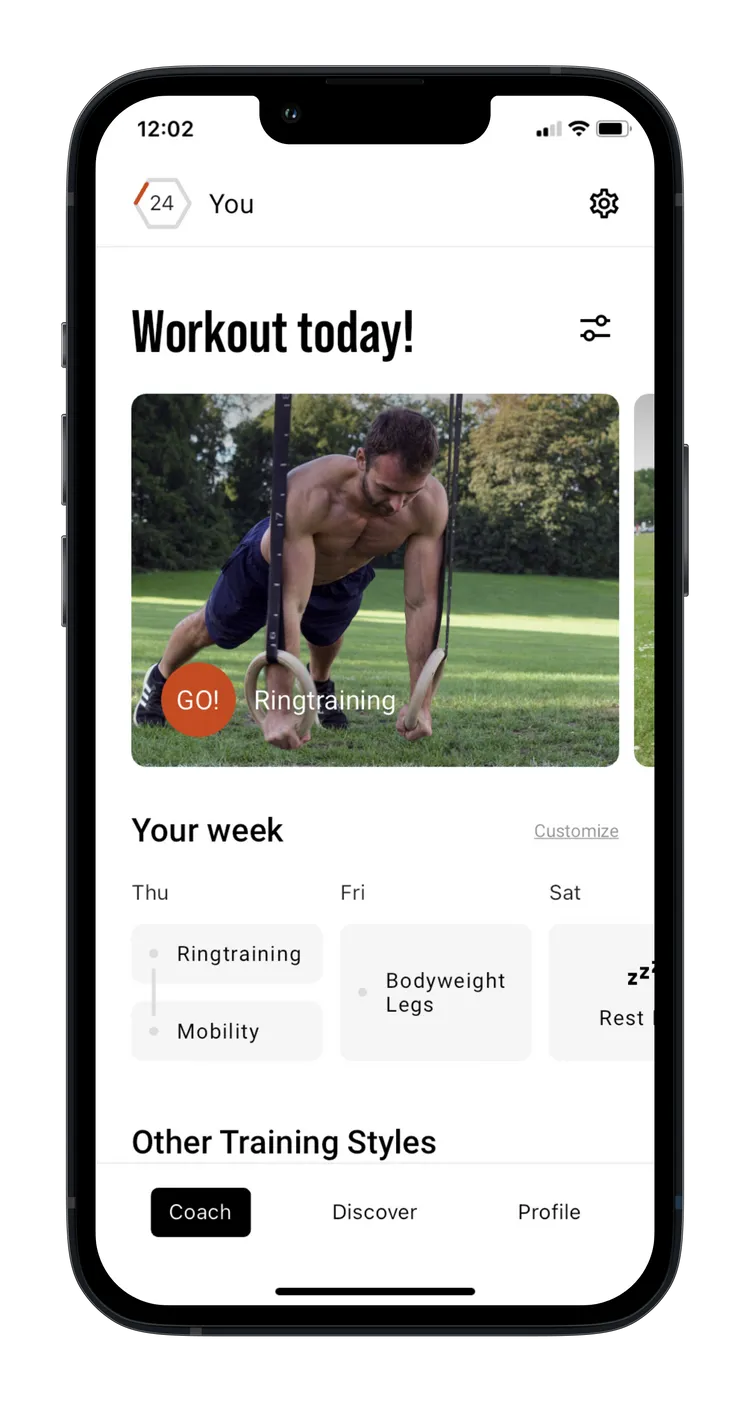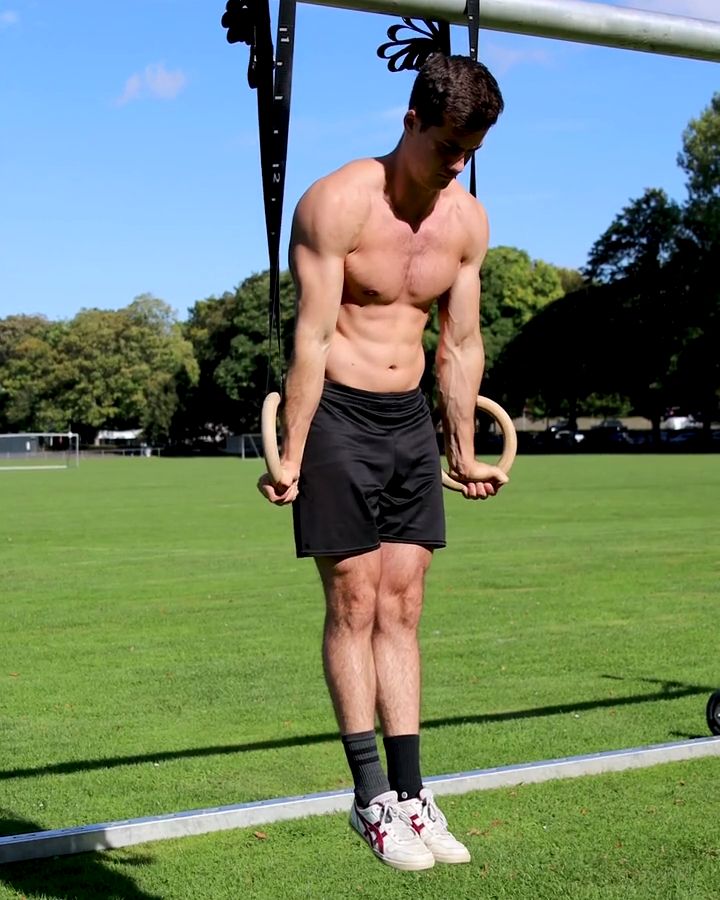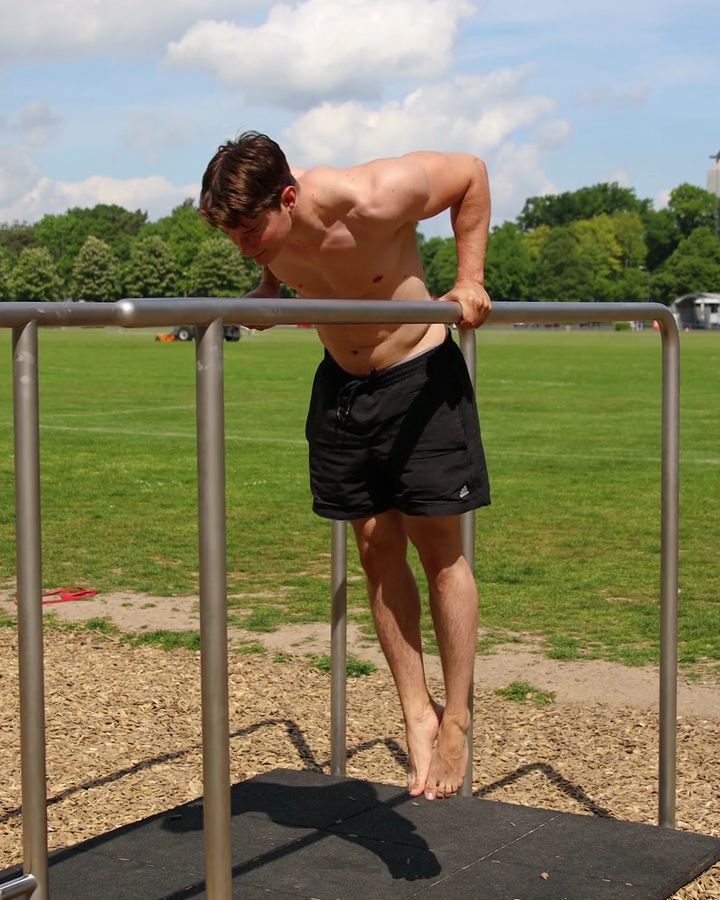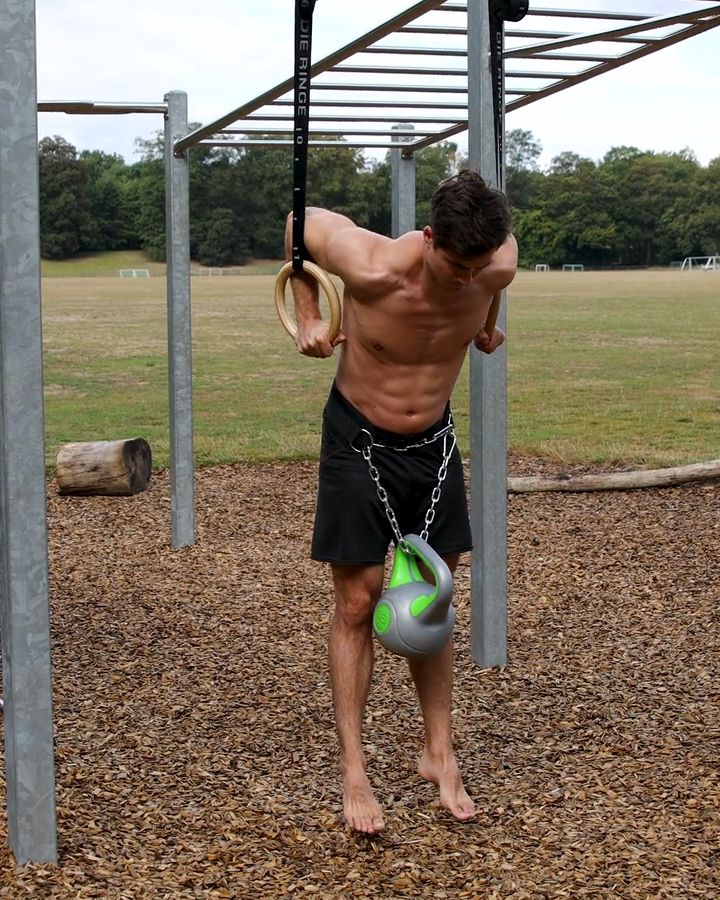Ring Dips
Ring Dips are a challenging variation of classic Dips on parallel bars, requiring a great deal of stability and strength. They engage more muscle groups and promote strength and symmetry in the chest, triceps, and shoulders. Dips on the rings prepare you for even more demanding exercises, such as the Ring Muscle Up.
Necessary equipment
Ring Dips - the correct execution
- Start in support hold position
- Feet are detached from the floor
- Bend the elbows backwards away
- Arms stay close to the body
- In the lowest position the upper arms are parallel to the floor
- Keep permanent tension in the core
The exercise Ring Dips is intended to be used as a hypertrophy exercise.
Which muscles are trained by Ring Dips?






Primary trained muscles for Ring Dips
Chest - The pectoralis major muscle is the large muscle on your chest. It helps you bring your arm towards your body and rotate it inward.
Secondary trained muscles for Ring Dips
Triceps - The triceps brachii muscle is located at the back of your upper arm. It extends your arm at the elbow and also helps move the arm backward.
Alternative variants of Ring Dips:
Dips RTO
Rotating the rings outward while in the Support Hold position (Rings Turned Out, RTO) increases the activation of the chest muscles. This position engages the muscles to keep the arms stable and close to the body. This variation is particularly effective for chest muscle development, as it requires a specific shoulder and arm position that significantly activates the chest muscles.
Necessary equipment
Dips RTO - the correct execution
- Start in support hold position
- Feet are off the floor
- Move the elbows backwards
- Arms stay close to the body
- In the lowest position the upper arms are parallel to the floor
- Keep permanent tension in the core
- Stretch arms and press back into support hold position
- Rotate palms forward with arms extended
- Rotate only as far as feels good and safe for you
Similar exercises to Ring Dips
Dips on the Parallel Bars
Parallel Bar Dips are an effective exercise for building strength and muscle mass, particularly in the chest and triceps area. They are well-suited for training with additional weight, such as a weight vest or dip belt. Although parallel bar dips require less stabilization than Ring Dips, they are ideal for anyone looking to specifically build muscle mass and strength.
Weighted Ring Dips
Weighted ring dips are an advanced variation of classic dips, where the additional weight significantly increases intensity. This exercise primarily targets the chest, shoulders, and triceps, with the instability of the rings often meaning that less weight can be managed compared to dips on parallel bars. However, many trainees feel their chest muscles working more intensely when training on rings. In addition to regular ring dips, Bulgarian ring dips offer another challenging ring dip variation.
This could also be interesting
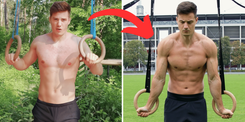
Calisthenics Body Transformation – How to Build a Strong, Lean, and Athletic Physique
Transform your body with Calisthenics! Build muscle, burn fat & achieve a shredded physique with bodyweight training. See real before & after results!

The Best Fitness Apps in 2025: Our Top 10 Recommendations
Don’t miss the best fitness apps of 2025: surprising favorites, free options, and perfect tools for your workouts. Find the ideal app today!
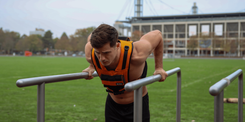
Complete Calisthenics Skills List – 40+ Exercises from Beginner to Pro
Which calisthenics skills should you learn first? And which ones will really help you progress? In this article, you’ll find a complete list of over 40 exercises – from the very basics to the toughest moves for professionals. Each exercise comes with instructions, so you can immediately integrate them into your training.
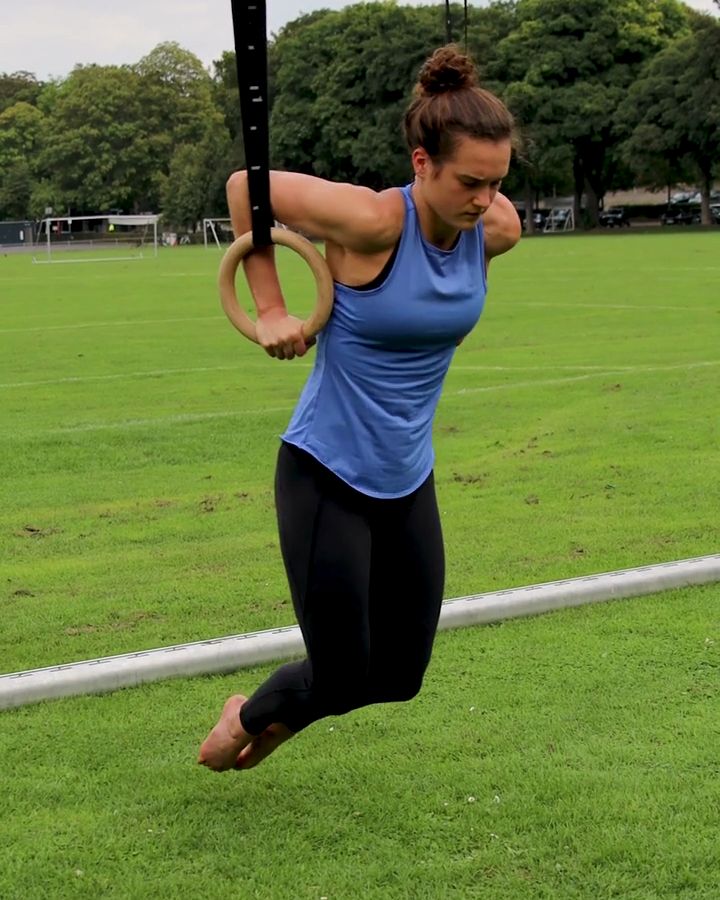
~e5724973d14549c23ea8a586b5736b36.png?alt=media)
